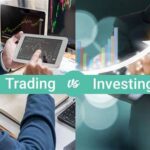
The Gordon Growth Model, also known as the Gordon-Shapiro Model or the Dividend Discount Model (DDM), is a fundamental tool in the realm of long-term investment planning. Developed by Myron J. Gordon and Eli Shapiro in the early 1960s, this financial valuation model has become a cornerstone for investors and analysts seeking to evaluate the intrinsic value of a stock. The Gordon Growth Model is particularly relevant for those interested in understanding the potential returns of an investment over an extended period, as it provides a systematic approach to valuing stocks based on expected dividends and growth rates.
The GGM Simplified Dividend Discount Model Explained
The Gordon Growth Model (GGM), often referred to as the simplified dividend discount model (SDDM), and sometimes interchangeably referred to as Stock Discount Model (Stock DDM), is a valuation approach that simplifies the assessment of a company stocks intrinsic value based on its future dividend payments.
The key differences between the GGM and DDM are in how the growth rate is treated. The general DDM model is a framework for valuing stocks based on the present value of its expected future dividends. The DDM models does not assume a constant growth rate in dividends while the GGM assumes a constant growth or perpetual growth rate. In the GGM model, there is no specific projection period. If a specific projection period needs to be considered where dividends may and can grow at different rates, a more complex model such as a two-stage or three-stage DDM should be utilized.
GGM model offers a streamlined yet effective way to estimate the intrinsic value of a stock based on its future dividend payments. It is important to note, the GGM model is best suitable for companies that exhibit relatively stable growth rates and predictable dividend patterns making it well-suited for mature companies.
What is the Gordon Growth Formula
The Gordon Growth Model formula is a method used to calculate the intrinsic value of a stock based on its expected future dividends. The formula is expressed as follows:

Where:
P0 is the present value of the stock
D0 is the most recent dividend (or dividend per share)
r is the required rate of return
g is the constant growth rate, also known as the perpetuity growth rate
The result (P0) represent the intrinsic value of the stock according to the Gordon Growth Model. The fraction 1 / ( r – g) is often referred to as the “continuation value”, “terminal value” or “discount factor.” This term represents the present value of all future dividends beyond the initial valuation period, assuming of course, they grow at a constant rate g. A higher discount rate (r ) or a lower assumed growth rate (g) will result in a higher discount factor, reducing the present value of the expected future dividends and, consequently, the intrinsic value of the stock.
The terminal cash flow or terminal valuation refers to the cash flow occurring at the end of the explicit forecast period. Investors use the intrinsic value to compare with the current market price of the stock to assess whether the stock is undervalued, overvalued, or fairly priced.
What are its uses for Long-term Investment Planning?
The GGM plays a pivotal role in long-term investment planning by offering a framework to estimate the present value of future dividends. At its core, the model assumes that the value of a stock is the sum of its present value of dividends, discounted at a required rate of return, and a perpetuity representing the terminal value. The model is especially useful for investors interested in dividend-paying stocks, as it takes into account not only the current dividend payments but also the anticipated growth in dividends. By factoring in these variables, the Gordon Growth Model helps investors make informed decisions about whether a stock is undervalued, overvalued, or fairly priced, facilitating strategic choices for long-term wealth accumulation.
As a widely accepted and applied method in financial analysis, the Gordon Growth Model stands as a valuable tool for those navigating the complexities of long-term investment planning in the dynamic landscape of financial markets.
What are its Limitations and How Can you Compensate them?
The Gordon Growth Model is a widely used valuation tool, but it comes with some limitations. It’s essential for investors and analysts to be aware of these limitations and consider them when using the model. Below are some of the key limitations of the GGM and potential compensations:
- Assumption of Constant Growth Rate (g):
Limitation: The GGM assumes a constant growth rate in perpetuity. In reality, a company’s growth rate may fluctuate over time.Compensation: Analysts can use a more conservative approach by estimating different growth rates for distinct periods or by considering the average historical growth rate. Sensitivity analysis, where the model is tested with varying growth rate assumptions, can also provide a range of possible valuations.
- Dependency on Dividends:
Limitation: The GGM is most applicable to companies that pay dividends. If a company doesn’t pay dividends, the model is not directly applicable.Compensation: For non-dividend-paying stocks, analysts may use alternative valuation models such as discounted cash flow (DCF) models, which consider the expected future cash flows of the company.
- Sensitivity to the Required Rate of Return (r):
Limitation: Small changes in the required rate of return can significantly impact the calculated intrinsic value.Compensation: Analysts should carefully assess and justify the chosen discount rate. Sensitivity analysis can again be valuable, showing the effect of different discount rates on the valuation.
- Applicability to Mature Companies:
Limitation: The GGM is better suited for mature, stable companies with predictable dividend growth. It may not be suitable for startups or high-growth companies.Compensation: For companies with uncertain or erratic growth, analysts should consider using alternative valuation models that better capture the company’s stage and risk profile, such as a discounted cash flow (DCF) analysis.
- Limited Consideration of Non-Dividend Factors:
Limitation: The GGM focuses primarily on dividends and may not fully account for other factors influencing stock value, such as changes in earnings, book value, or market sentiment.Compensation: Analysts can complement GGM with other valuation methods, perform a comprehensive fundamental analysis, and consider qualitative factors to obtain a more holistic view of a company’s value.
- Market Conditions and Interest Rates:
Limitation: The GGM assumes a constant required rate of return, which may not hold true in changing economic conditions.Compensation: Analysts can adjust the discount rate to reflect changes in market conditions and interest rates. Regularly reviewing and updating assumptions based on economic trends is crucial.
While the GGM is a valuable tool, its limitations highlight the importance of using it judiciously and in conjunction with other valuation methods. Combining quantitative analysis with qualitative considerations can enhance the accuracy and reliability of the valuation process.
Simplify Long-Term Investment Planning for Consistent Growth
In summary, the GGM model is a valuable component of a comprehensive long-term investment strategy, providing a systematic approach to assess the intrinsic value of company stocks. To achieve consistent growth, investors should combine the insights from fundamental analysis, including the GGM, with other relevant tools or strategies, and websites like Above the Green Line ensuring a well-rounded and informed approach to investment planning.
Above the Green Line, a website that focuses on educating users about investing, investment strategies and the stock market in general, can complement GMM by providing additional insights, tools, and education resources to help investors make well-informed decisions and achieve their goals.
For those interested in learning more about GGM and other investment strategies for long-term investment planning, we invite you to explore Above The Greenline’s guide on dividend growth strategy along with articles associated with investing. This comprehensive resource provides a detailed overview of dividend investment strategies, including how they work, the benefits of buying dividend stocks, stock selection criteria, and more.






